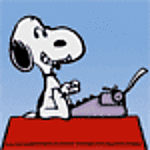 |
The Painting and Weathering |
I start priming using Tamiya Flat Brown XF-10, I'd like to make a
pre-shading, and this was the first time I tried it and I have to admit that
I wasn't satisfied, maybe mainly due my lack of experience, since I didn't
get the shading I was looking for, but I did visualize where I did my errors
and I think I'll have better results next time. Just after priming, I made
an inspection to correct any flaws on the putty and it was time for the main
colour.
In spite of the instructions recommend to use Gunze Mr. Color paints, I
rather used the Model Master Sand – FS33531 because I think it would better
match the colours on my references (later on, a friend of mine told me that
he never knew about that paint on the Osório, but I decided to stick
up to my references, so you can follow the instructions that seem to be very
accurate). The gun recoil cover was painted with Tamiya Desert Yellow XF59,
the tracks I painted first with Model Master Metalizer Lacquer – Burnt Metal
Buffing Metalizer, followed by Tamiya Flat Black XF1 to the rubber shoes,
the machine guns were painted with Tamiya Gun Metal X10, the smoke grenade
launchers point caps were painted with Tamiya Flat Black XF1. To the rear
back light I used a retro-projector pen with fine tip in red colour. Again I
used the retro-projector pen in orange colour to paint the signaling light
on the turret. I didn't use the decals, since my references didn't show any
markings, just after the model completion, however, I've known about the
release of a decal sheet by a local manufacturer, but it was already too
late.
After all small details, I began the weathering process, since this models
specifically, was only used in tests, I decided to make a light weathering
(despite I like my models well weathered and worn), for this task I used
only dry pastel chalks.
Basically I do this way:
- With the modelling knife I scratch the chalk to obtain a very thin
dust.
- Using a thin pointed brush, I took the pastel chalk dust and apply it
to the model.
- I blow away the excess and keep rubbing the brush onto the model.
- Following, I took a larger soft and clean brush, and rub it at the
same place I did before (with the thin brush), this way I try to soft the
edges and take out the remaining dust excess.
- I make this in every hide place, around equipments and tools and in
the bend areas.
To this particular model, I didn't use rust colours, that could make
suggest for an excessive wear, and just the collected dust by its use during
the tests. The chalk colour was as near as possible to the sand colour, but
quite different from the colour used for the model painting. I was generous
in applying it on the roads and tracks, to simulate a vehicle under use.
And this was the end, and now I have a nice piece that figure as my first
“national” AFV on my collection. I'd like to thanks for Nilo Sérgio
Biavatti, for kindly revising this article. |
 |
















